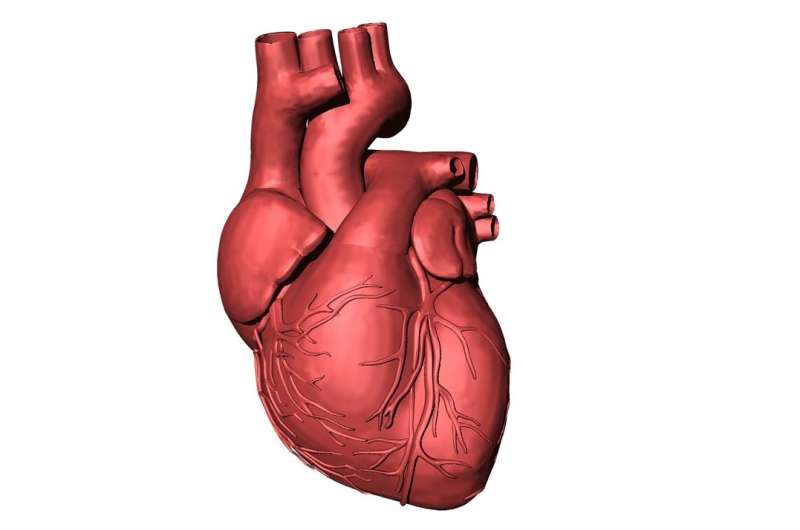This article has been reviewed according to Science X's editorial process and policies. Editors have highlighted the following attributes while ensuring the content's credibility:
fact-checked
trusted source
proofread
Novel ablation strategy improves freedom from arrhythmias in atrial fibrillation patients

An innovative three-step ablation approach including ethanol infusion of the vein of Marshall improves freedom from arrhythmias in patients with persistent atrial fibrillation compared to pulmonary vein isolation (PVI) alone, according to late breaking science presented at EHRA 2023. Preliminary results at 10 months are presented, with follow up ongoing until 12 months.
The cornerstone of catheter ablation of atrial fibrillation is complete isolation of the pulmonary veins. However, only 50–60% of patients remain in sinus rhythm at two years. Numerous trials of different ablation strategies have failed to demonstrate superiority over PVI.
The Marshall-Plan ablation strategy consists of 1) PVI; 2) ethanol infusion of the vein of Marshall; and 3) a linear ablation set to block the three main anatomical isthmuses to the pulmonary veins (dome, mitral and cavotricuspid isthmus lines). The technique focuses on anatomical targets that have been individually recognized as important for the initiation or maintenance of atrial fibrillation but have not been collectively targeted in a systematic manner. The current investigators previously reported encouraging results using this strategy in non-randomized studies.
The present study compared 12-month arrhythmia-free survival with the Marshall-Plan ablation strategy versus PVI only. This was a prospective, randomized, parallel group trial of superiority. The trial included 120 patients with symptomatic persistent atrial fibrillation for more than one month. The average age of participants was 67 years and 21 (18%) were women.
Participants were randomized to receive the Marshall-Plan or PVI alone. Follow up occurred at 3, 6, 9 and 12 months during which patients underwent a number of tests including an electrocardiogram (ECG), echocardiography, stress test and 24-hour Holter monitoring. Recurrence of arrhythmias was identified using ECG teletransmission, with findings sent to the hospital once a week plus any time the patient had symptoms. The primary endpoint was recurrence of atrial fibrillation or atrial tachycardia lasting more than 30 seconds at 12 months (including a 3-month blanking period) after a single ablation procedure.
The total radiofrequency time was significantly longer in the PVI group (29 minutes) compared with the Marshall-Plan group (23 minutes; p<0.001). The full lesion set was successfully completed in 53 patients (88%) receiving the Marshall-Plan strategy and 59 patients (98%) receiving PVI only. In an intention-to-treat analysis, the recurrence of arrhythmias after an average follow up of 10 months was significantly higher in the PVI group compared with the Marshall-Plan group (18 vs. 8 patients; p=0.026). Follow up will continue until 12 months.
Principal investigator Dr. Nicolas Derval of the University Hospital of Bordeaux, France said, "After 10 months of follow up, the success rate in the Marshall-Plan group was significantly better (87%) compared to the PVI only group (70%). However, the results are still preliminary as follow up is not completed for all patients. While the findings indicate that the Marshall-Plan strategy holds promise for patients with persistent atrial fibrillation, they need to be confirmed in a multicenter trial."



















